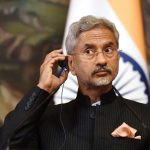Cartographer’s Day
Liberalisation of map-making is a gamechanger for the economy—but with this freedom, too, comes a big responsibility
 Sudeep Paul
Sudeep Paul
 Sudeep Paul
Sudeep Paul
 |
26 Feb, 2021
|
26 Feb, 2021
/wp-content/uploads/2021/02/Cartographer1.jpg)
(Illustration: Saurabh Singh)
The map is the most important empirical document that our species came up with. However, despite their awareness of the contours of the subcontinent and its maritime neighbourhood, ancient Indians didn’t display any particular interest in cartography. At least, little evidence exists that they did, unlike the Greeks on the seas or the Arabs who, for a long while, were the geographers to the world. Mapping India and disseminating information about the seas around the subcontinent was mostly the business of others. As European rivalries became full-bodied on Indian soil, the French soon emerged at the top of the league in their cartographic accuracy. But the advent of William Lambton and the Great Trigonometrical Survey of India—begun in 1802 and completed in the 1870s under James Walker—is when the story of the modern Indian map begins. Lambton’s successor George Everest, as the Surveyor General, had taken the trigonometrical survey under the aegis of the Survey of India, which remained inseparable from most things related to maps in India thereafter.
The map, a tool for traders and merchants under sail, was also a military instrument through most of its existence and the strategic ramifications of map-making were acute in the great game rivalries played out by colonising armies and navies on the subcontinent and its maritime rim. Independent India didn’t shake off that legacy—not without reason—till the Department of Science and Technology’s announcement on February 15th that it was liberalising map-making, granting easy access to geospatial data to private players outside the labyrinths of bureaucracy. The Government will, of course, safeguard sensitive data and prohibit access to military installations, but the freedom to survey and map should be a gamechanger for the Indian economy, industry, social welfare, disease and disaster management, and practically every resident.
Geospatial technology has had the single-biggest impact on map-making in recent decades and revolutionised the uses of maps. From the ability (and success via efficient routes) of food deliveries by aggregating services or groceries and durables from retail giants or the local trader—all transacted on a smartphone—to deciding which village needs toilets or water before its neighbour, or in which city block a disease is spreading fast, life as we know it would be inconceivable without the instant combination of static and dynamic geospatial data. It has brought its own epoch-defining headaches too. For instance, when you know Big Tech is taking snapshots of your location and logging it, whether you turn off your location on your mobile or not. Nevertheless, we are still living in the midst of the Covid-19 pandemic—and nothing that has been done in battling it would have been possible without geospatial data. Worldwide, the pandemic has witnessed how everyday geospatial data can be worked into epidemiological monitoring to track the path of the virus. This has also allowed identification of vulnerable populations through mobile tracing and designing of precision responses.
The Government believes that the liberalised guidelines will add a value of Rs 1 lakh crore to the geospatial data sector and enable Indian players to compete globally while also creating jobs for more than two million people. On this change of direction, Sanjeev Sanyal, Principal Economic Advisor in the Ministry of Finance, tells Open: “The cartography and geospatial sector is already very important—almost everyone now uses Google Maps or some such application. However, till this reform, we regulated it like it was a security threat rather than an economic opportunity. This is because of a colonial-era framework that saw cartographic information as something that only government should possess. Ironically, this only led to greater reliance on foreign providers since there was no space for innovation by India’s private sector. So, for the first time since the East India Company, the reforms mean that India’s cartography sector is open for investment and exploration.”
Government holds a lot of data. Enabling easier access would allow optimal utilisation of such data and more effective socio-economic interventions. However, despite the overabundance of interactive digital maps and smartphones today, India remains data-poor and inadequately surveyed which, in turn, has led to the twin problem of reliance on foreign sources and the irony that while successive governments have held on to the data purse, much of what they—and the Survey of India—sought to monopolise, became available in the public domain anyway. As Union Science and Technology Minister Harsh Vardhan noted, publicly available geospatial services had long ago made the restrictions on geospatial data redundant. On the other hand, there is the growing geospatial digital divide between OECD countries and the rest.

India, among other things, needs to better map its natural resource information. Tushar Sethi, who heads UK-based geoinformatics company Margosa Environmental Solutions Ltd, tells Open: “We have repeatedly noted a desperate need for India to exploit its natural resource information using both remote and field sensor technologies. Applications are many, and include the mapping of hard-to-access terrain and terrain features, integrated water resource management, water quality monitoring for agriculture and other uses, and vector-borne disease mapping.” About the new policy, Sethi says: “At the outset, it is essential to establish a basic distinction in the context of the new geospatial data policy: Our view is that earth science data needs to be viewed as separate from personal geo-located data. As to the former category, the Government’s new policy is irrefutably a step in the right direction for multi-sector economic development, disaster risk and natural resource management, and innovation, to name but a few benefits.”
Allowing the private sector to freely conduct its own surveys—trusting it to adhere to the guidelines instead of forcing it through endless red tape—collect, disseminate and deploy data will drive efficiencies in infrastructure-building (a must-go for India), agriculture (the cynosure of all eyes) and emergency response capacities (Covid is seeing new surges ). Precision agriculture is the heart of technology-driven reform in the sector and, beginning with quickly noting land-use modifications through satellite data to targeting irrigation at the right place, it reduces costs, enables more efficient energy use and resource deployment as well as mitigates the environmental fallout. Infrastructure must not only be at the right place but also at the right time, taking into account need, utility, wear and tear, terrain and environment. This includes roads and bridges and housing for all as much as power plants, water management and treatment as well as facilities for renewables. Part of the reason infra projects take a long time to take off in India is the slow access to geospatial data. Time lost is one of the biggest subtractions from success. Sethi says: “Publicly accessible earth science data stands to benefit not just private sector entities engaged in environmental services but also public sector institutions with a responsibility to the people of India. More widely available data should also help to reduce the needless and costly duplication of data collection and analysis that occurs so often the world over.”

There is a global context too. Even as the geospatial digital divide has been widening, countries have been attempting to make their collection and management of national geospatial data comprehensive. National Geodetic Frameworks are being integrated at the next higher level of regional frameworks and, ultimately, to the International Terrestrial Reference Frame (ITRF) that is updated, and new solutions incorporated, periodically. Integrated data makes it easier to globally and nationally track, for instance, changes on the earth’s surface and sea levels, including tectonic shifts and fractures or pressure build-ups that can trigger earthquakes and tsunamis.
EUROPE was fortunate that Gerardus Mercator did not meet an early death for heresy for his Lutheran convictions after having been born a Catholic in an age of upheaval. But sometime in the late 20th century, the geography-obsessed European mind lost its sense of the planet’s surface, its natural boundaries and man-made lines on the map. The much less map-literate American mind never caught on to what had changed. “To recover our sense of geography, we first must fix the moment in recent history when we most profoundly lost it, explain why we lost it, and elucidate how that affected our assumptions about the world…the moment I have isolated, when that loss seemed most acute, was immediately after the collapse of the Berlin Wall…For suddenly we were in a world in which the dismantling of a man-made boundary in Germany had led to the assumption that all human divisions were surmountable,” wrote Robert D Kaplan in The Revenge of Geography (2012). Ignoring, or forgetting, the map was a terrible mistake and the world is still paying the price for it. For, if the map is fate, we have to read it right. “A good place to understand the present, and to ask questions about the future, is on the ground, travelling as slowly as possible.” (ibid)
India’s colonial masters who made its modern maps were paranoid about the security of Empire. The Indian state, post-Independence, remained obsessed with the map. So much so, it became schizophrenic about its security and the technological revolution unleashed around it. Worried about the future, it remained chained to history and did not really do the map justice. Sanyal, who is also a cartography enthusiast and collector of old maps, says: “The history of map-making saw two models compete: one used by the Spanish and Portuguese in the 16th century who kept it a state monopoly, and the Dutch and the English who allowed a freer approach. The Iberians had an initial advantage as they had made the early discoveries of sea routes to the Americas and the East, but the freewheeling private innovations of the Dutch and the English meant that they soon had much better maps. This was a key factor in their success against Spanish and Portuguese competitors. Interestingly, the British would retain this open approach at home but would turn cartography into a state monopoly in colonial India so that they could control information. This colonial suspicion of non-state native cartography continued to be embedded in our regulations long after Independence and even after satellite photos made them irrelevant. The new reforms have finally ended that regime and opened up a whole new world of opportunities in this sector.”
IT WAS the Kargil War that awakened India to the risks of dependence on foreign data. It led to government investment in geodesy and geographic information systems (GIS). Yet, it has taken India this long to grant a competitive edge to its private players who can hereafter export data and also bring investment into the sector. Foreign firms and foreign-controlled/based Indian firms will have to buy their data from their Indian counterparts. To illustrate the persistence of swimming against the current, a petition filed in the Delhi High Court as recently as July 2019 had sought to restrain Google from uploading India’s maps, given the sensitivity of the data. Part of the petitioner’s argument was that the Mumbai 26/11 terrorists had used Google to recce the city. Again, digital map-makers in India had to use multi-cam vehicles since LiDAR (Light Detection and Ranging) mapping was not allowed. This, when it’s standard across the world.
Sethi argues that for defence and security, there is neither cause for concern on the new geospatial data policy nor any justification for previous blanket bans on the dissemination of such earth-science data. “After all, a restrictive regulatory framework is not the toolkit to stop adversarial state actors from accessing whatever they seek. And surely, the Government knows that the technologically competent among them already possess certain types of data until now withheld from the public domain,” he says.
Where the state should stamp its authority, and again from a public interest perspective, is privacy and uses of the other type of geospatial data. “There are legitimate privacy rights and misuse concerns with respect to personal geo-located datasets (social media, telecom, census data, etcetera).” Sethi, while not commenting on the specific implications for India, opines that regulatory frameworks like the EU’s GDPR (General Data Protection Regulation 2016/679) “serve as a reference for providing wide-ranging protections and upholding ethical standards.”
The Government recognised that the benefits outweighed the risks and costs quite some time ago. The new policy only took its time finding its way out of the labyrinth. Its immediate beneficiaries should know that with this freedom, too, come great responsibilities.

/wp-content/uploads/2025/05/Cover-War-Shock-1.jpg)










More Columns
India holds the upper hand as hostilities with Pakistan announced Open
Ajay Kumar Garg Engineering College (AKGEC), Ghaziabad Open Avenues
Sanskriti University Open Avenues